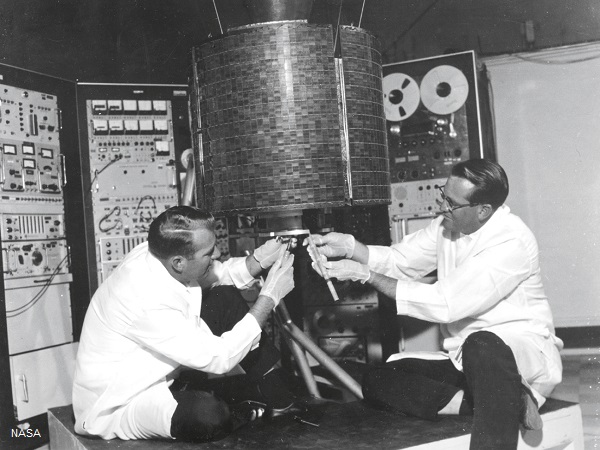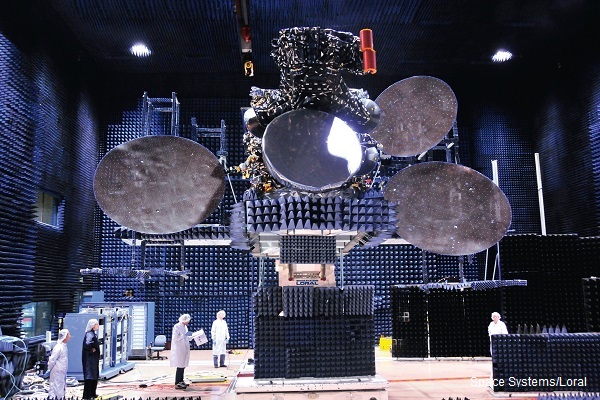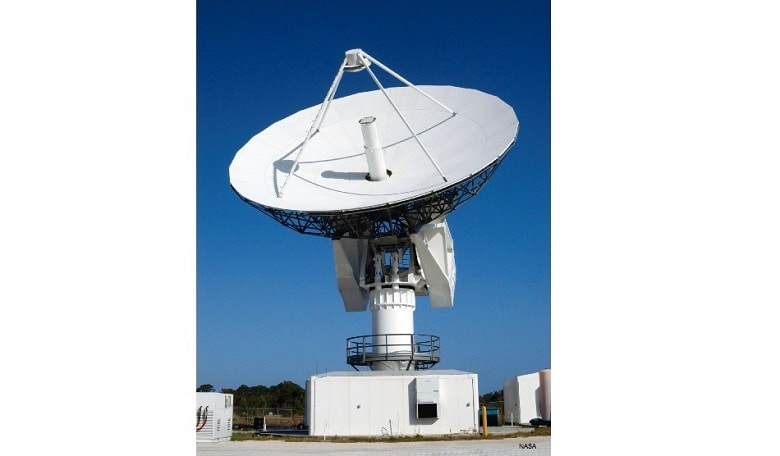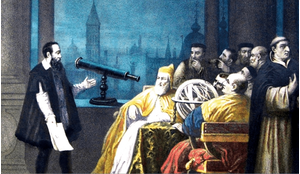Next year, commercial satellite communication will celebrate its 50th anniversary. There is much to be celebrated! Today, it is an established multi-billion dollar industry with hundreds of thousands employees and millions of customers. So it may seem strange that this industry is now facing an unexpected internal challenge, born out of technological progress.
The problem is that hundreds of millions of dollars have already been invested in the production and launch of powerful satellites. Each could provide hundreds of thousands of customers with broadband internet. However, back on earth, many millions of potential customers in rural areas who right now have either no internet access, or only extremely low-speed connections, will not be able to take advantage of these new capabilities because the cost of the service will be too high.
How could this have happened? To understand we have to retrace our steps back to how it all began.
Revolutions
Only 50 years have passed since 6 April 1965 and the launch of Early Bird, the first commercial communications satellite. In that time three technological revolutions in satellite communication have occurred right before my eyes. All three were connected with mastering new frequency ranges.
The first satellites used C-band (4-6 Ghz), which required 5-metre-wide receiving dishes. Yet that was small compared to those for transatlantic channels, which had to use monsters of 16 or even 32 metres in diameter. They cost hundreds of thousands or even millions of dollars.
A mere decade later, engineers began exploring another frequency range, allocated by the International Telecommunications Union (ITU). It was named Ku-band, and used higher frequencies of 11-14 Ghz. This allowed dishes to be reduced to 2-3 metres in size. In tandem, microelectronics reduced the size, weight, and equipment energy consumption of the satellite’s transmitters. This boosted the power of the signal being sent to Earth, resulting in yet smaller receivers. Starting in the 1990s, dishes could be just over a meter long.
This completely changed the face of the consumer. Previously, they had been mostly national telecom organisations that used the channels for telephone communications between continents. A single minute could cost as much as 5 Big Macs. With the appearance of the Personal Earth Station, created by Hughes Earth Station engineers in the early 1980s, other companies began using satellite communications for their daily business. Fortune Magazine called WalMart’s 1985 decision to use satellite communications one of the 20 business solutions that changed the world.
More and more powerful satellites will continue to be launched into orbit and then hang idle, above the heads of potential customers
During this period, satellite television began evolving as fast as satellite communications. Even when a satellite receiver cost a few hundred dollars, and the antenna was 1-1.5 metres in diameter, they were already being used by wealthy customers who wanted to receive 50-60 satellite channels instead of 10-12 broadcast ones. When the era of digital television began, satellite TV and radio broadcasting took over the world. There are now hundreds of millions of people who own a satellite dish, and a single satellite can transmit hundreds of channels.
Insatiable appetites
But TV viewers’ appetites and the engineers’ skills are constantly increasing and improving. More and more customers, more and more TV channels, better picture quality all means more demands on the data transmission rate that the satellite must provide. Whereas 3-4 megabits is enough for a regular TV channel, a high definition one requires no less than 8 megabits.
Unfortunately, the Ku-band frequency spectrum is not infinite. It’s only 500 Megahertz wide. So, the era of Ka-band at 18-30 Megahertz began and the third frequency revolution was at hand. This time the ITU allocated a width of 2500 Mhz, 5 times that allocated for C-band and Ku-band.

At the same time, satellite designers had another breakthrough. They created the High Throughput Satellite (HTS) based on ultra-precise antenna calculations and projections. Instead of pointing just one ray at the Earth, a single antenna forms a few dozen rays that cover large surfaces and allow for the simultaneous use of the entire available 2500 Mhz. The result is phenomenal; the channel capacity of the first HTS (Viasat-1) at time of launch exceeded the channel capacity of ALL communication satellites that were working over the US at that time.
For a while, it seemed that the world was indeed our oyster, but things were more complex than they appeared. Communication satellites are used for two main services: communications, and TV and radio broadcasting. Large coverage areas are ideal for TV/radio broadcasting, since every consumer in a given zone receives the same signal. In this situation, the broadcaster can share the cost of renting the satellite space segment and purchasing content for all the customers who are in the satellite’s coverage area.
Satellite communication is different; each user relies on two-way communication, transmiting and receiving unique content from the satellite. This is why HTS are mostly used for broadband internet, whereas digital television uses traditional Ku-band transponders.
New era
Today, we are at the beginning of the HTS era. There are no more than 10 of these satellites currently in orbit, but no less than 20 in various stages of production and design. Soon the space segment available for organising broadband internet will increase ten or a hundred fold.
Yet here lies the main danger for the market, the seriousness of which satellite operators are just beginning to comprehend. Who will be the consumers of HTS-supplied Ka-band broadband internet?
Until now, the best example of satellite internet use and its business model were provided by the US, home to the Hughes Network System and ViaSat. The two companies simultaneously produce consumer equipment, own the satellites and are the broadband internet service providers. Here, the “three-in-one” model has been successfully integrated because America is a giant territory where a large percentage of the population live in rural areas.
According to marketing experts, up to 10% of the US population live in areas where cable internet will never exist. Internet costs for US citizens do not include transport costs for delivering equipment overseas, nor import taxes, nor high VAT. And the average American salary is high enough so that a typical monthly fee for satellite internet of $50/month is perfectly affordable.
 The Satmex 8 communications satellite
The Satmex 8 communications satellite
Due to these fortunate circumstances, over 70% of satellite internet users currently live in the US, with another 10-15% in Western Europe, despite the fact that the telecommunications infrastructure in these two regions could hardly be called underdeveloped.
The demand for broadband internet is currently much higher in Asia, Latin America and Africa but the cost is a prohibiting factor.
HTS Ka-band satellites for these regions have been launched, but so far have not had great success. The problem is that although the fees charged by broadband internet providers in these regions are 1.5-2 times less than they are in the US, they can still be an entire family’s monthly income in Africa.
Nevertheless the main issue isn’t even the service fees. The main hurdle is the cost of VSAT (very small aperture terminal) equipment, the professional name for a satellite receiver installed at the client’s residence. Yes, it has become more than 20 times cheaper during the last 20 years. The cost has fallen to $350-$400 from $8000-$10,000 dollars but it has to be transported over the ocean, customs fees must be paid, as well as bank charges, taxes, etc. Taking all that into consideration, $400 turns into $600, which is often two months’ salary for a potential customer.
European provider EutelSat has already encountered this problem. Its fleet includes a specially designed Multimedia Messaging Service (MMS) Ka-band satellite that has 80 rays which blanket-cover all of Europe, North Africa, and even the european part of Russia. It is commercially successful in Western Europe, where the infrastructure is well-developed, whereas the rates of use even in Russia cannot be considered that high with only 5000 customers in two years.
The paradox of demand
For now, this paradox will only continue to worsen. More and more powerful satellites will continue to be launched into orbit and then hang idle, above the heads of potential customers. Equipment producers will also remain idle. It is a classic catch-22 – the equipment is expensive because the demand is low.
Who will be the consumers of HTS-supplied Ka-band broadband internet?
In my opinion, there can be only one solution: the price of VSATs must be lowered to about $100, the cost of a regular cell-phone. A universal VSAT must be created, one that can work with the Network Management Station (NMS) of any manufacturer, the same way that a GSM, 3G or LTE mobile phone can work with any base station. Currently satellite internet providers who change their NMS are forced also to change their clients’ terminals.
The SEND foundation installed a VSAT (very small aperture terminal) at the Project Office in Salaga, Ghana. Such equipment is too expensive for most individuals
VSAT manufacturers should abate their pride and work together on designing a unified interface and communications protocol between client VSATs and NMS. This was attempted 10 years ago, but unfortunately it was not supported by the major players because each considered their product to be the best, and their market advantage overwhelming. Back then, in Ka-band times, there were no opportunities or potential to provide millions of people with broadband internet and to increase production volume.
In my opinion, the following steps are the most reasonable for VSAT terminal manufacturers. Firstly, the creation of a uniform communication and data exchange interface and protocol for use with NMS. Secondly, the opening of this protocol to all manufacturers. This will allow dozens of Chinese or SEA companies to join production, as well as organize so-called complete knock down (CKD) assembly of “national VSAT” in countries such as India, Brazil, China, and Russia, where the government limits import and imposes heavy customs and administrative duties on the finished product.
For a while, it seemed that the world was indeed our oyster, but things were more complex than they appeared
Thirdly, lower the cost of NMS, 80% of which is the cost of unique program software. This could be achieved by moving from the sales model (selling the software as part of NMS to broadband internet service providers) to the ‘software as service’ model (charging based on traffic used by customers). The latter model combines the interests of NMS producers and the satellite network operators and forces them to create rate plans that will provide maximum network traffic, and maximally effective use of the launched Ka-band HTS.
It’s not the first time such a choice must be made in business. In 1981, IBM refused any sort of licensing for its legendary IBM PC component and on top of that, made its architecture open-source. This seemingly suicidal move was revolutionary for the PC market, changing it from one where dozens of freelancers offered their unique developments to an industry with millions in production volume.
Ten years later, when creating their new standard, representatives of 26 European telephone companies took the same approach and initially used open-source architecture and protocols, available to any manufacturer, and created amazing results. The resulting GSM standard took over the world and allowed almost anyone to always remain in touch, effectively changing humanity’s lifestyle. It’s not for nothing that the creation of GSM is considered an exceptional display of European scientific and technical cooperation.
I cannot say when satellite terminal manufacturers, MMS operators and satellite internet providers will get together at the bargaining table, and who will be invited to that particular meeting. Neither am I sure that the business model suggested by me is the ideal one. But I believe in human rationality and the effectiveness of the market economy that always finds the best solution in the end – both for the consumer and for the producer. I believe in it especially when finding a solution to the global problem of including all of the world’s population in the Digital World and the fantastic market with tens of millions of new customers that is on offer.














